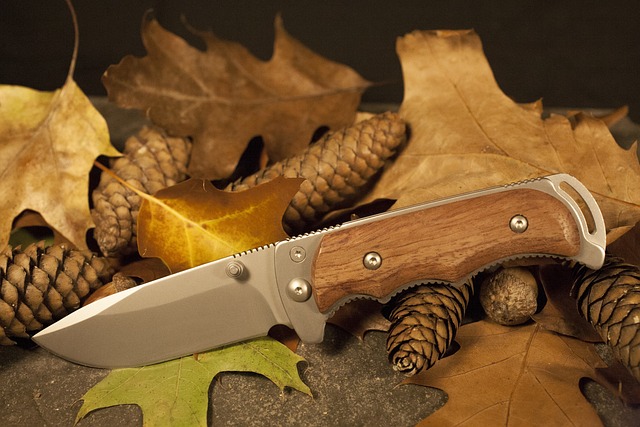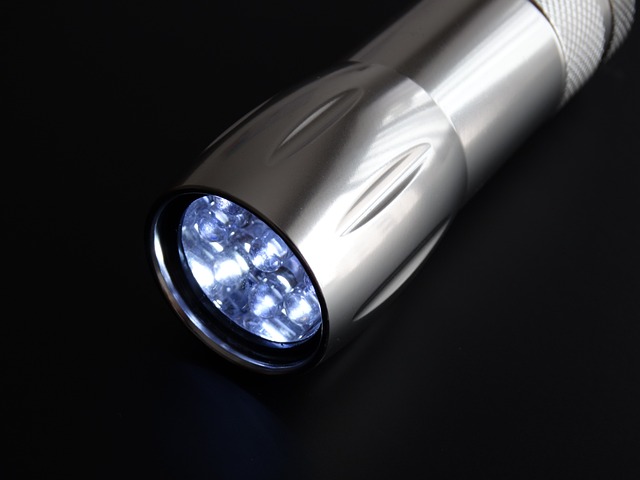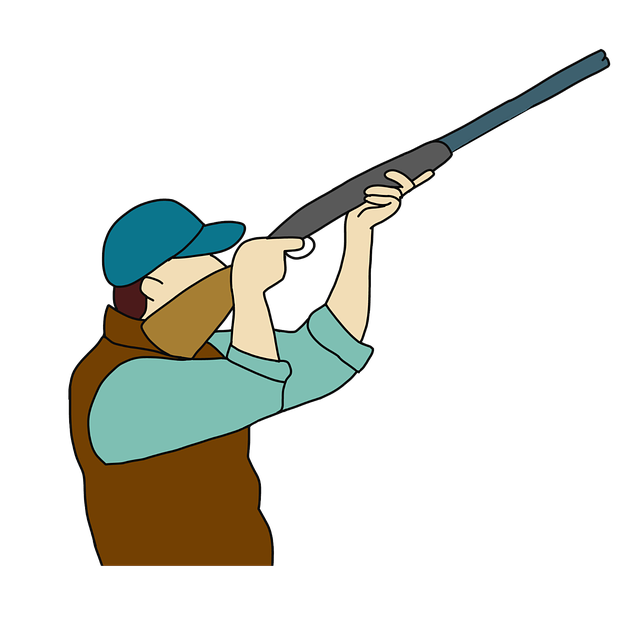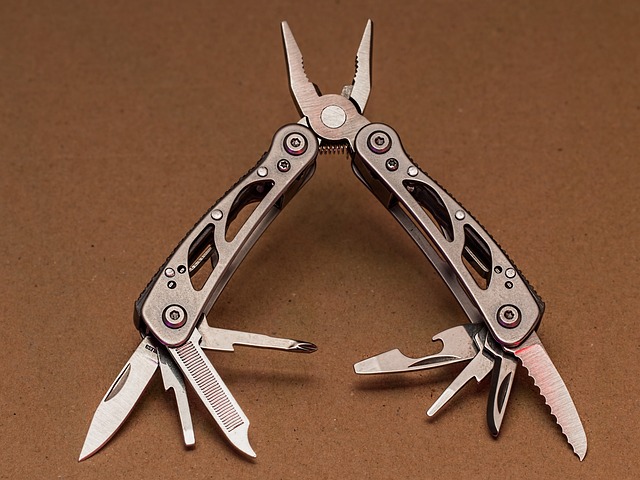When the hunt turns to predator tracking under the cover of darkness, the right tool can make all the difference. This article illuminates the critical role tactical lights play in nighttime predator hunting, offering insights on selecting flashlights for hunting and survival situations that stand up to the demands of nocturnal pursuit. We’ll dissect the components of a robust tactical flashlight, outline strategies for deploying this technology effectively, evaluate top-rated models suitable for both hunting and survival scenarios, and provide maintenance tips to ensure your light source remains dependable in the harshest conditions. Join us as we shed light on the essentials of predator hunting with tactical lights.
- Understanding the Role of Tactical Lights in Predator Hunting
- Key Features to Look for in a Tactical Light for Nighttime Predator Hunts
- The Anatomy of a High-Quality Tactical Flashlight for Survival Situations
- Strategies for Effective Use of Tactical Lights During Predator Scouting Missions
- Evaluating the Best Tactical Light Models for Hunting and Survival
- Practical Tips for Maintaining and Taking Care of Your Tactical Flashlight in Harsh Environments
Understanding the Role of Tactical Lights in Predator Hunting

In the realm of predator hunting, tactical lights serve as indispensable tools for both pre-dawn and post-dusk operations when natural lighting is scarce. These Flashlights For Hunting And Survival Situations are engineered to provide hunters with a clear beam that can illuminate targets without giving away the hunter’s position due to their low profile and diffused light distribution. The importance of visibility cannot be overstated; it allows for precise aiming and shot placement, which is critical when dealing with potentially dangerous animals. These lights are often equipped with features such as high lumen outputs, red or green light options to preserve night vision, and durable constructions that can withstand the rigors of outdoor environments. Additionally, they are designed to be compact and ergonomic for easy handling in stressful situations, making them a must-have for any predator hunter’s arsenal.
The role of tactical lights in predator hunting extends beyond mere visibility. They are instrumental in assessing the environment, identifying animal behavior, and determining shot angles. Flashlights For Hunting And Survival Situations are also critical for signaling for help if needed or for moving through terrain without stepping on debris that could give away one’s position. The best tactical lights offer a balance between brightness, battery life, and functionality, ensuring that hunters can rely on them throughout their hunting excursions. With advancements in LED technology and battery efficiency, these lights have become more reliable and user-friendly than ever before, solidifying their place as an essential tool for predator hunters who prioritize safety, effectiveness, and ethical practices.
Key Features to Look for in a Tactical Light for Nighttime Predator Hunts

When selecting a tactical light for nighttime predator hunts, several key features should be considered to enhance your hunting experience and ensure safety in various survival situations. Firstly, lumen output is crucial; a high-lumen flashlight can illuminate long distances, essential for spotting and identifying prey without being detected. Additionally, LED technology offers a durable and energy-efficient light source that minimizes heat output, which is beneficial when maintaining a stealthy presence in the field.
Secondly, beam intensity and focus are vital components of a tactical light. A focused spotlight can penetrate deep into the darkness to reveal an animal’s location, while a wider floodlight setting can be used for navigating your surroundings or for tasks requiring a broader light range. Features such as adjustable zoom and multiple modes—including strobe and SOS settings—can also be advantageous in diverse hunting and survival scenarios. Furthermore, a tactical light should be robustly built with a sturdy construction to withstand the elements and rough terrain often encountered during hunts. Consider flashlights for hunting and survival situations that are both waterproof and shock-resistant to ensure longevity and reliability. A reliable, versatile tactical light can make all the difference in effectively navigating nighttime predator hunts and other survival situations.
The Anatomy of a High-Quality Tactical Flashlight for Survival Situations

When selecting a flashlight for predator hunting and survival situations, the anatomy of a high-quality tactical flashlight cannot be overstated. A robust construction is paramount; the best models are often made from aircraft-grade aluminum or durable polymer, ensuring both lightweight performance and resistance to environmental factors. These materials also facilitate heat dissipation, which is crucial when the light is in continuous use or in high-output settings.
The lighting component itself should be of the highest luminosity, typically achieved through LED technology. A high lumen output is essential for illuminating dark environments and for tasks that require precise visibility, such as tracking animal movements or navigating through dense foliage. Additionally, a tactical flashlight should offer multiple brightness settings, allowing users to conserve battery life during low-intensity activities or increase brightness when situational awareness demands it. A quality beam focus—ranging from a narrow spotlight for distant objects to a diffused flood for broader illumination—is also a key feature. This versatility ensures that the flashlight serves as an indispensable tool for both hunting and survival scenarios, enhancing safety and effectiveness in a variety of conditions. Furthermore, the inclusion of a strobe or SOS function can be critical for signaling in distress situations, making it a comprehensive solution for any outdoor enthusiast or survivalist.
Strategies for Effective Use of Tactical Lights During Predator Scouting Missions

When embarking on predator scouting missions, the strategic deployment of flashlights for hunting and survival situations can significantly enhance your success. A key consideration is understanding how light interacts with the environment and prey. Predators often rely on low-light conditions to camouflage their movements; thus, a tactical light can reveal their positions. To effectively use tactical lights, start by familiarizing yourself with the capabilities of your flashlight, including its brightness levels, beam distance, and battery life. A high-quality flashlight for hunting and survival situations, equipped with a red or green LED, minimizes the risk of blindings and preserves night adaptation, essential for stalking nocturnal predators.
Positioning your tactical light correctly is crucial. Use it to illuminate areas where predators are likely to be active, such as along game trails or near feeding grounds. A dimmed light can prevent spooking animals, while a brighter beam can be employed when you need to identify or document your target. Scan the area methodically, avoiding direct light on the subject if possible. This approach not only reduces the risk of detection but also allows you to gather valuable data for effective hunting strategies. Additionally, consider the lighting angle; casting shadows can help discern body shapes and behaviors at a distance. By integrating tactical lights into your predator scouting missions, you can transform nighttime hunts from a game of chance into calculated endeavors, increasing both safety and success in the field.
Evaluating the Best Tactical Light Models for Hunting and Survival

Practical Tips for Maintaining and Taking Care of Your Tactical Flashlight in Harsh Environments

When venturing into harsh environments for predator hunting, maintaining your flashlight is paramount. Flashlights designed for hunting and survival situations are robust, but they still require diligent care to ensure optimal performance. Firstly, always store your tactical flashlight in a secure place where it won’t be exposed to excessive impact or moisture. Use a protective case that shields the light from dust, debris, and water, which can impair its clarity and durability. Regularly inspect the O-rings and seals for wear and replace them if necessary to maintain the device’s weatherproofing.
Moreover, after each outing, clean your flashlight thoroughly. Remove any accumulated residue or grime from the exterior and interior with a soft cloth and mild detergent. Pay special attention to the lens, as dirt or smudges can reduce light output. Dry the flashlight completely before storing it, ensuring no moisture remains that could freeze and cause internal damage in colder environments. Check the battery compartment for corrosion after each use and keep spare batteries at the ready, as low temperatures can drain power quickly. By following these practical tips, your flashlight will serve you reliably during those critical moments of predator hunting in demanding conditions.


